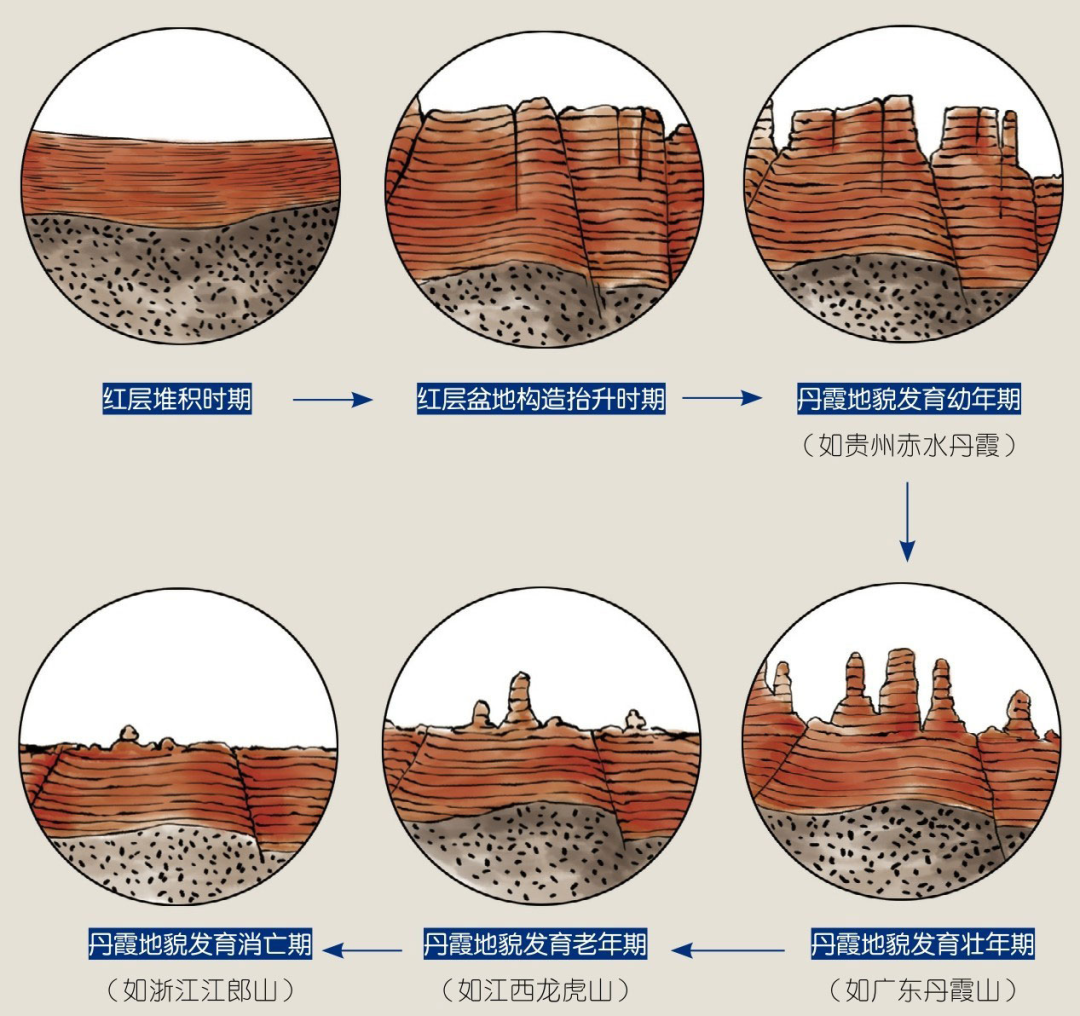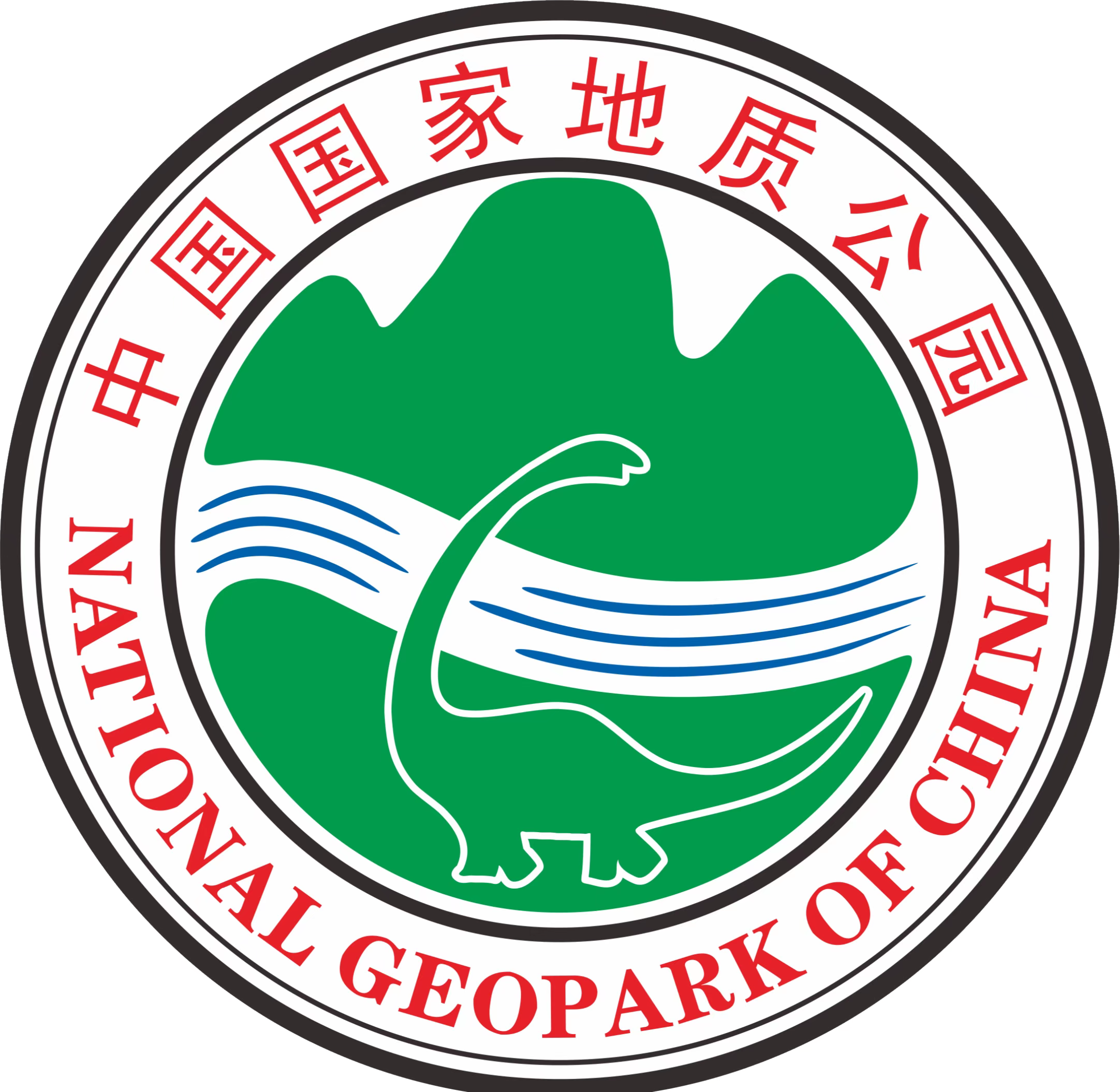The Danxia Landform is a continental red clastic formation that formed in a zone of tectonic activity during the Yanshan movement. It is a typical type of landform represented by the Danya Red Cliff, formed by compression and uplift from Himalayan movement and strong weathering and denudation.
After long weathering, stripping, and water erosion, these red sandstones form isolated peaks and steep, strange rocks. They are thick red sands and conglomerates, developed along vertical joints, chiefly in horizontal or gently dipping red strata from the Jurassic to the Tertiary.
The formation of the Danxia landscape can be divided into four phases:
Phase I: The Himalayan Orogeny caused some of the red strata to tilt and relax their folds, and lifted the red basin to form an outflow region.
Phase II: The flowing water converges towards the low-lying area in the middle of the basin, eroding along the vertical joints of the rock layers to form a deep ditch with two perpendicular walls, known as an alley valley.
Phase III: When external forces such as flowing water are unable to completely remove the colluvial deposits, they form a relatively gentle slope of the colluvial pile. The colluvial cone continues to grow upwards, with the underlying bedrock forming a gentle slope that is consistent with the inclination of the colluvial cone.
Phase IV: After the collapse of the rock on the face of the cliff, the range of the summit gradually narrows, forming formations such as stony peaks and walls. Combined with erosion by external forces such as flowing water, the landforms we see today in Danxia have been formed.




